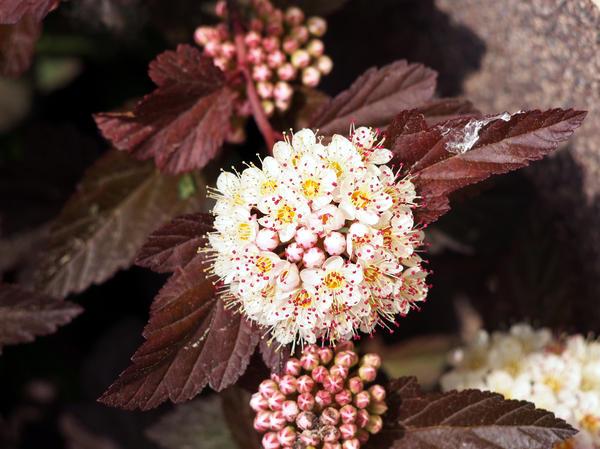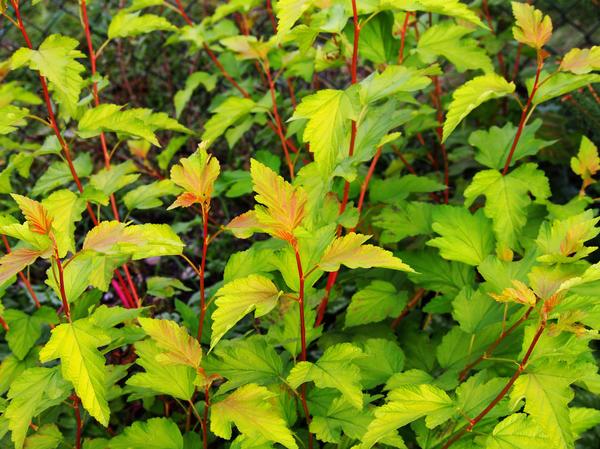Content
A hedge made of bladderwort: how to find the ideal solution for any garden or summer cottage. Ways to decorate your garden and protect it from prying eyes and animals.
Features of a hedge made from bladderwort
Today, a fence can be built not only from materials that are offered by hardware stores. The best option is to create a hedge. A manor with such decor acquires special charm and uniqueness. And caring for a living fence is no more difficult than caring for ordinary zucchini or cucumbers. No less attractive is the cost of erecting a fence, which can vary in color. It is these factors that make bladderwort increasingly popular in our country.
The benefits of the plant include the following:
- ease of care;
- color difference;
- disease resistance;
- climatic versatility;
- affordability (there are budget and expensive options);
- reliable protection from dust and animals entering the site;
- Possibility of zoning the estate.
The best varieties of bladderwort for hedges
Several varieties of bladderwort are suitable for erecting a hedge. They are combined into two color groups - yellow-leaved and red-leaved.
Diablo
Diablo is a vesicular carp that grows up to 300 cm in height. The culture has glossy leaves, colored purple-red. Planting in dark areas allows you to modify the foliage: it becomes greener, and reddish spots appear only in places.
Summer Wine
Summer Wine - the bushes of this vesicular carp reach 200 cm in height. Spring allows you to admire the wine-red foliage, which reflects the name of the plant. In summer, its color changes to green.
Red Baron
Red Baron - viburnum leaf carp also reaches two meters in height, blooms with pink buds, and red berries appear during ripening.
Luteus
Luteus is a viburnum-leaved vesicle that reaches a height of 3 meters. The plant has green-yellow foliage color (if it grows in the shade) or bright yellow if the plant is placed in areas exposed to the sun.
Dart's Gold
Dart’s Gold – the growth of this bush is half that of the previous variety. When blooming, the leaves are orange in color, become green in the summer, and turn bronze in autumn.
How to plant a bladderwort hedge
In order for a hedge of viburnum foliage to please the eye for a long time, it is necessary to plant it correctly. The first step is to focus on purchasing seedlings.
- purchases must be made in specialized stores;
- planting material must have appropriate certificates;
- It is better to choose seedlings that grew in containers and other containers - in this case, the plant can be planted at any time of the year (except winter).
The next stage is choosing a suitable location. The shrub prefers sunny areas with good soil, which quickly absorbs moisture and oxygen. If there is a lack of microelements in the soil, there is a need to apply fertilizing.
When planting a hedge, you should dig a trench 50 - 60 cm deep. It will be possible to more conveniently regulate the interval between bushes. When using planting holes, the living fence can grow into the clearings.
Before planting, it is important to arrange a drainage system. To do this, pebbles or expanded clay are laid at the bottom of the trench. The dug up soil can be mixed with mineral fertilizer in some container. After the plants are planted in the trench, the prepared substrate is poured onto the roots, pressing lightly. After planting, the soil must be thoroughly watered and a layer of mulch (sawdust, peat, etc.) laid out. Watering is carried out regularly so that the soil is always moist. After the roots get stronger and the plant takes root, the frequency of watering is reduced.
How to care for a bladderwort hedge
A hedge made from viburnum leaf, as seen in the photo, looks very rich and quite unique. Proper care will help ensure the aesthetic beauty of the planting. The plant does not require care, but some nuances of growing still need to be taken into account.
Trimming
To ensure that the bush is completely covered with foliage, and not just its upper part, it is necessary to regularly prune the plant. Many gardeners believe that this manipulation leads to faster hedge growth. In fact, this circumstance does not affect the growth rate in any way. With proper pruning, the vesicle becomes denser, the branches and root system of the shrub are strengthened.
Rules for standard pruning:
- Pruning of the bladderwort should be carried out in the first spring after planting.
- In this case, only 15 - 20 cm of the plant is left.
- After a year, the procedure should be repeated, at which time the backbone of the bush will become more powerful and durable, and the branches will grow 30 - 40 cm in different directions. It is necessary to cut off half of the newly grown branches. The side parts are cut off only by 7 - 8 cm.
To ensure an aesthetically correct appearance, the bush should be pruned twice.
- The first time they carry out a sanitary “cleaning” of the plant. In early spring, remove all branches that are dry or frozen;
- The second pruning is formative. It is carried out until the 4th year of the plant’s life every season 3-4 times. During this period, it is important to cut off the top shoots so that the sides can grow with full force. Starting from the 5th year, the hedge bush is formed based on the wishes of the gardener. It can be given almost any shape.
Recharge
Since the hedge grows in a continuous row, the nutrients in the soil are quickly depleted, and the introduction of beneficial microelements becomes problematic. Therefore, gardeners must fertilize the plant on time and at certain intervals.
- Before carrying out a sanitary trimming of the bush, it is necessary to apply nitrogenous fertilizer. You can use 2 tbsp.l. urea mixed with 1 liter of mullein, 20 liters of water and ammonium nitrate.
- In the autumn, mineral fertilizers are applied, which have a beneficial effect on plant growth and disease resistance.
- Mulching with rotten compost is also carried out.
Watering
Constant watering is necessary for young seedlings. Without enough moisture, the plant may die. Therefore, after planting a hedge, the bladderwort is watered every other day.
When the hedge gets stronger, reduce the frequency of watering. In the dry season and in the presence of infertile soil, the bladderwort is watered twice a week. If there is sufficient rainfall, watering is completely canceled. Each plant bush requires at least 35 liters of water.
Wintering
Despite their unpretentiousness and frost resistance, young seedlings can freeze out in the first year of life. Therefore, before the onset of cold weather, they need to be insulated. Mulching is carried out with any suitable material - hay, peat, humus, sawdust, etc.
If a hedge of bladderwort is planted in a region with harsh winters, then it is better to protect the shrub from the cold. A small layer of sawdust sprinkled at the roots of the fence is enough for the plant to successfully overwinter.
Diseases
Looking at a photo of a vesicular carp hedge, many gardeners wonder how resistant this plant is to disease. With proper care, the shrub is rarely subject to the development of pathologies. Only a few possible diseases can be identified:
- Chlorosis. The foliage turns yellow, and the young bushes dry out at the tips. A lack of nitrogen, iron or magnesium deficiency can lead to this problem;
- Leaf spotting. It also occurs when there is a lack of useful microelements and when the soil is waterlogged.
Timely application of fertilizers, loosening the soil and adherence to the watering regime will help to avoid all of the above problems.
Gardening tips for creating hedges
A hedge made of bladderwort can be of different heights and completely different shapes. Experienced gardeners have their own recommendations for creating such a landscape solution.
- When pruning for the first time, it is necessary to leave at least 5 buds on each branch so that they sprout foliage and the hedge does not seem “liquid” in the first season.
- Until 4 years old, the hedge needs to be trimmed along a stretched rope. This will help to correctly form an even row, and will also be a way to protect against incorrect pruning.
- After the bush matures, you should not give it exotic shapes. The fence should be dense and strong in appearance. When cutting the lower parts, there is a risk that the bush will begin to rapidly grow branches upward. If you want to create an unusual shape, you should work only with the upper part of the bush.
Conclusion
A hedge made from bladderwort is an ideal solution for large areas.With its help, you can divide your estate into zones, set aside a place for relaxation and simply protect yourself from the prying eyes of curious neighbors and passers-by.















